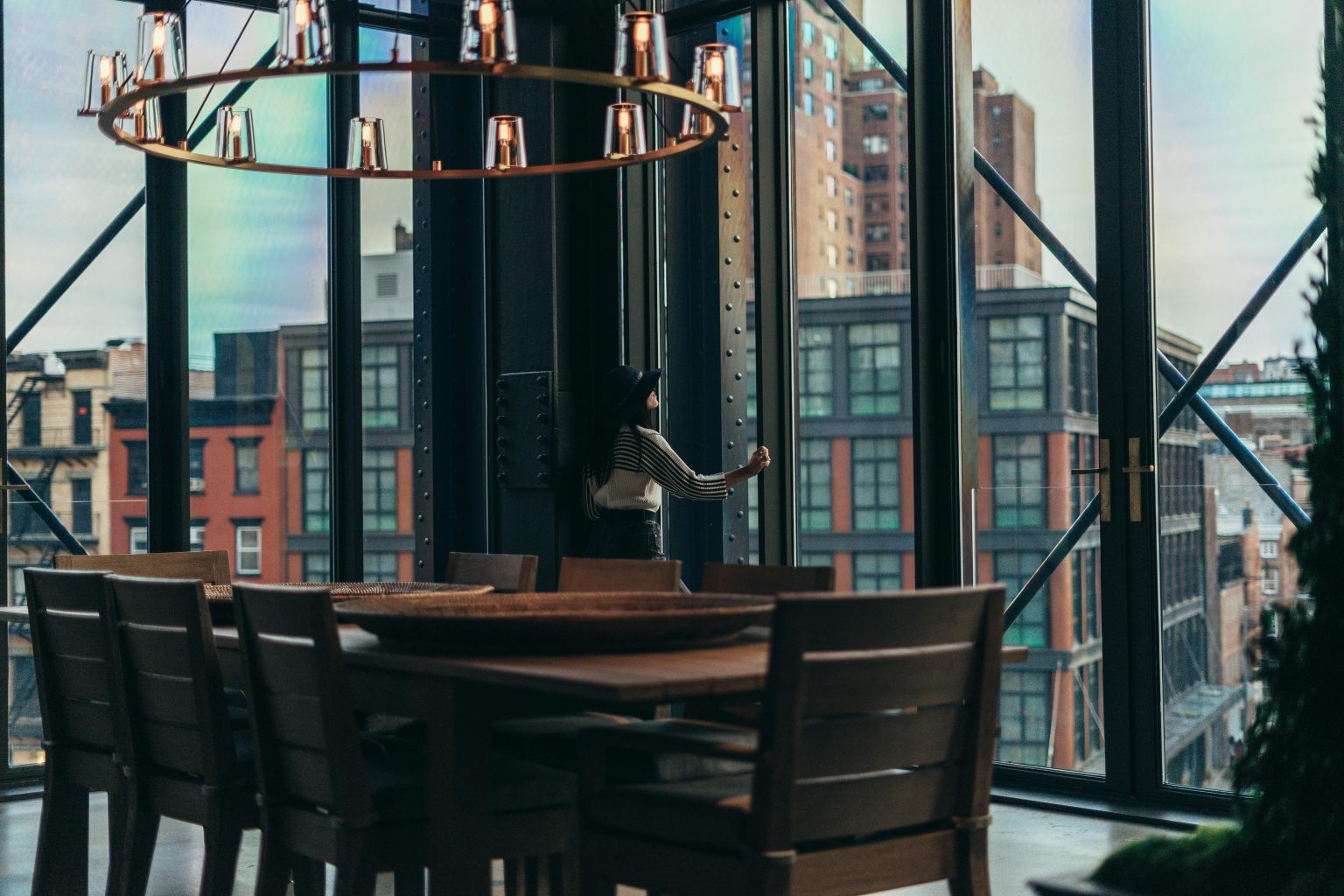Luxury is too often mistaken for cost. A high price tag, a desirable postcode, or marble countertops lead many to believe they’ve reached the peak of residential refinement. But look past the polished surfaces, and many so-called luxury apartments in the UK turn out to be more about aesthetics than genuine comfort or quality.
Granite worktops, designer-labelled kitchen appliances, and glossy brochures frequently pose as symbols of prestige. However, these features can be marketing choices rather than ones that enhance daily life. Postcode snobbery also plays its part, with certain areas gaining prestige regardless of what’s behind the front door. A flat in Zone 1 London might have poor ventilation and noise issues, while one in Leeds or Glasgow could offer real peace and comfort.
This article seeks to challenge these assumptions by exploring “The Luxury Ladder” — a four-part framework for understanding what makes a UK apartment genuinely luxurious. Each rung represents a distinct layer of true quality: the invisible essentials, tactile materials, daily rituals, and personal identity. These aren’t abstract ideas; they reflect how we actually live.
Real luxury isn’t about looking good in estate agent photos. It’s about how a space feels, supports your lifestyle, and grows with you. It’s emotional, practical, and long-lasting. Our goal is to demonstrate how this form of luxury can exist across different budgets and cities. Let’s take a closer look, one rung at a time.
The Invisible Layer – Space, Light, and Quiet
True luxury starts with what you don’t immediately notice. Space that breathes, natural light that shifts with the day, and a quietness that allows for proper rest. These invisible qualities shape every aspect of how we experience home.
Begin with ceiling height. Even a modest increase can alter a room’s proportions, making it feel less compressed and more open. In UK flats, especially older conversions, ceiling height can vary significantly. High ceilings paired with large windows introduce an uplifting spaciousness.
Natural light is another vital element. Skylights, clerestory windows, or thoughtful mirror placement can dramatically improve a room’s feel. Light regulates sleep cycles, influences mood, and affects how we perceive colour and material. North-facing rooms in the UK often lack daylight, so strategic design choices – like pale walls and low-sheen finishes – can help maximise available light.
Silence is underrated. In cities like Manchester or Bristol, sound intrusion from neighbouring flats or busy streets can impact sleep and stress levels. Double-glazed sash windows, underlay beneath engineered flooring, and solid-core doors aren’t glamorous but provide real relief.
Layout matters just as much. A poorly zoned open-plan flat can feel chaotic. Clever use of partial dividers, bookcases, and sliding screens can separate spaces for sleeping, working, and relaxing without closing things off entirely.
Consider the case of a two-bedroom flat in Manchester’s Northern Quarter. Originally dark and echo-filled, it was transformed using two internal light wells, upgraded flooring, and reconfigured circulation paths. The flat’s square footage remained unchanged, but its livability dramatically improved. It now commands boutique rental rates.
UK-specific regulations also come into play. Leaseholds might restrict structural modifications, but permitted development rights may allow additions like rooflights or changes to windows. Retrofitting acoustic curtains or investing in insulation films can be game changers in rental properties.
Luxury is not about how large the space is, but how intelligently it uses what’s there. A small, light-filled, and peaceful flat in Bath can easily outshine a larger but clumsily designed unit in central London. Comfort starts with what you feel, not just what you see.
The Material Story – Surfaces You Touch, and Why They Matter
Luxury isn’t visual. It’s tactile. Surfaces we touch daily – handles, flooring, walls – communicate far more about quality than decorative items or staged styling. This layer of luxury is about honesty in materials and consistency in touch.
We instinctively respond to texture. Think of the difference between a cool ceramic handle and a hollow plastic one. One offers reassurance, the other feels disposable. Surfaces that weather, soften, or change with use – like unlacquered brass or waxed timber – provide a sense of presence and longevity.
Contrary to assumptions, luxury materials don’t have to be expensive. Engineered oak, for example, is budget-friendly, durable, and visually warm. Pair it with custom metal fixtures or handmade tiles, and the space feels curated rather than mass-produced.
Consider the story of a retired couple in Bristol. Instead of replacing their cabinets with high-gloss options, they commissioned open shelving made from reclaimed oak by a local carpenter. They replaced flashy taps with brass ones that tarnish beautifully over time. Their home now receives attention online for its understated, tactile warmth.
Smart sourcing is key. British stonemasons often sell offcuts of premium materials. These pieces can be used as splashbacks, window sills, or bathroom shelving at a fraction of the cost. Reclamation yards across the country offer aged timber, ironwork, and original tilework that bring authenticity.
This is where elements of restaurant furniture subtly influence residential interiors. Polished concrete counters, bentwood chairs, or terrazzo tables originally designed for durability in hospitality settings now represent both practical and aesthetic value at home.
Touch dictates trust. A surface that wears in instead of wearing out sends a quiet message of care. When choosing materials, prioritise those that feel substantial and improve with age. That’s the difference between something that’s merely new and something that’s truly luxurious.
Ritual, Not Just Room – How Luxury Is Felt Through Use
A luxurious flat is one that supports how you live. Not just when everything’s tidy, but when you’re in the middle of your routines. Rituals – morning coffee, winding down with a book, prepping dinner – define the emotional value of space.
Start with friction. Luxury often means removing it. Soft-close cabinetry, heated floors on a timer, or lighting that automatically shifts with the evening all reduce micro-irritations. These features rarely show up in listings, but they profoundly shape your mood.
Thoughtful rituals transform ordinary flats. One London creative reworked her rented flat without structural changes. She installed dimmable lights, added sound-dampening curtains, and created a journaling corner with layered lighting and textures. Her mornings now begin without harsh overheads or clutter.
Tenants often assume they can’t make meaningful changes. Yet portable or reversible upgrades abound: clip-on reading lamps, plug-in bidets, peel-and-stick mood lighting, foldable kitchen islands. These improve daily rituals without violating lease agreements.
Designing for function adds emotional clarity. A workspace facing a blank wall creates focus. A snug sofa with layered textiles encourages rest. A strategically placed mirror can multiply light and provide moments of self-check without being overbearing.
In a time when UK homes double as offices, gyms, and sanctuaries, luxury is measured in how easily a space adapts to shifting roles. One compact flat in Edinburgh was redesigned with modular storage, a pull-out work table, and a freestanding wardrobe partition. The layout now accommodates work calls, yoga, and rest without disruption.
Tech should assist, not overwhelm. Think: WiFi-enabled heating that learns your routine, silent dishwashers that run overnight, or automatic blinds that rise with daylight. These touches disappear into routine but elevate the living experience.
Luxury, here, means support. A home that moves with you. That’s more powerful than any cosmetic finish.
The Layer of Self – Personalisation, Provenance, and the Long Game
Luxury becomes personal when your home speaks for you. Generic styling, even with premium materials, falls short of the richness that comes from lived-in meaning.
True personal luxury is slow-built. It involves collecting, editing, and layering. It’s about provenance – where something comes from, how it was made, who owned it before. These stories embed a space with texture far deeper than the material alone.
Think local. A hand-thrown mug from a Devon potter, a lino print from a South London artist, or a vintage armchair from a village sale creates emotional resonance. Each item brings narrative. Each one roots your apartment in your journey.
Start small with a single forever item. Maybe a thick wool throw passed down from your grandparents. Or a sturdy mid-century sideboard picked up for £75 in Norfolk. Let that item guide colour palettes, textures, or room arrangements.
Quiet luxury is about subtraction. It’s knowing what not to include. A cluttered home with expensive finishes still feels noisy. A well-edited home with humble items placed meaningfully feels considered and calm.
One young couple in Glasgow embodies this approach. They filled their living space with a blend of IKEA basics and characterful finds: custom lino prints, a worn leather chair, a hand-painted side table. Each piece tells a story. Visitors don’t see money spent – they see personality expressed.
Resources for building this layer abound. Facebook Marketplace, Gumtree, vintage fairs, and local auction houses offer treasure at reasonable prices. Join community Facebook groups where people often give away items for free. Look for wood grain, handcrafted joints, or natural patina as markers of longevity.
Luxury doesn’t arrive in a box. It evolves. As your lifestyle shifts, your space should grow with it. You might swap pieces over time, but the narrative should always feel yours.
Your Ladder, Your Rules
Luxury doesn’t come from a developer’s brochure. It’s built layer by layer, through attention, use, and identity. And in the UK, with its varied housing stock, true luxury isn’t confined to postcode or budget.
The four rungs of the Luxury Ladder are tools, not rules. The invisible layer gives you peace and mental ease. The material layer delivers depth and tactile satisfaction. Ritual design turns functionality into joy. The self layer anchors your space in memory and meaning.
You don’t have to climb all four rungs at once. Start with one. Install acoustic curtains. Swap out cold handles for something warmer. Find a shelf that can hold both books and quiet moments. Over time, your flat will start to feel like it was made for you.
In the context of the UK housing market – whether you’re renting in Sheffield, buying in Kent, or house-sharing in London – redefining luxury on your own terms offers freedom. It’s not about size or status. It’s about creating something that sustains your daily life.
So create your own version of luxury. Use light to energise. Let texture ground you. Incorporate ritual to reduce stress. Select items that speak of history and care. And if there’s one lesson to remember, it’s this: real luxury isn’t about cost. It’s about intention, comfort, and connection — layered over time, with purpose.



